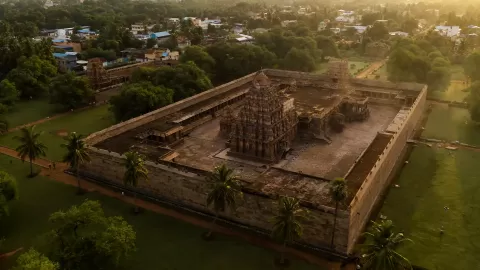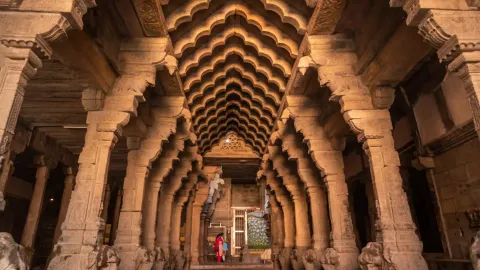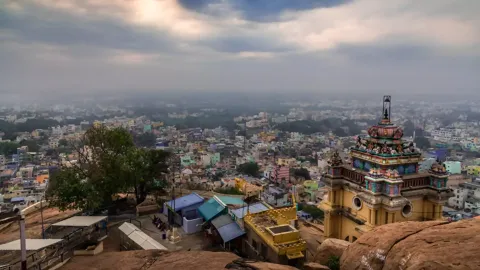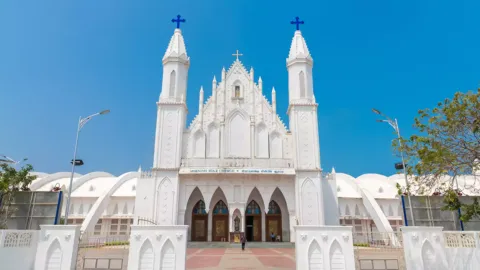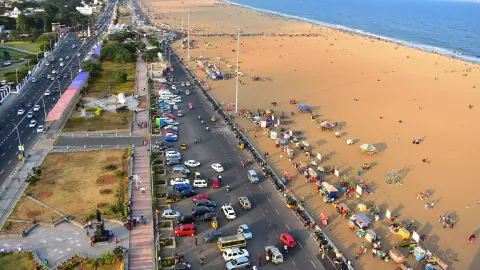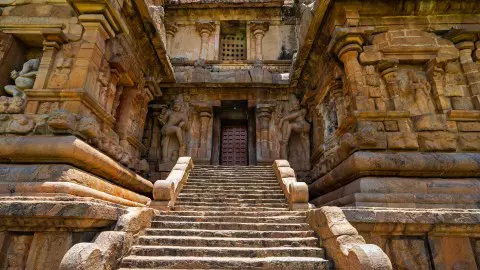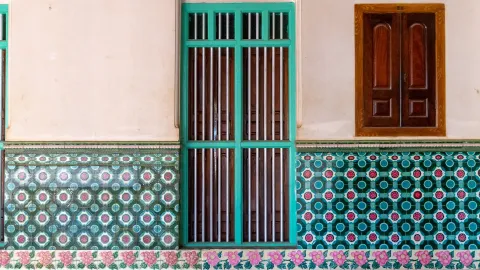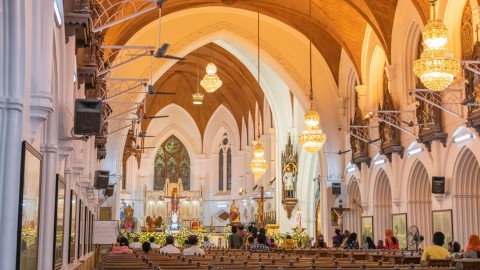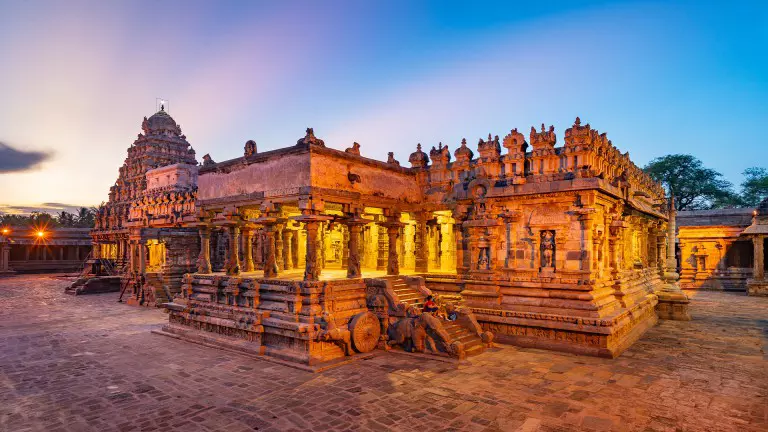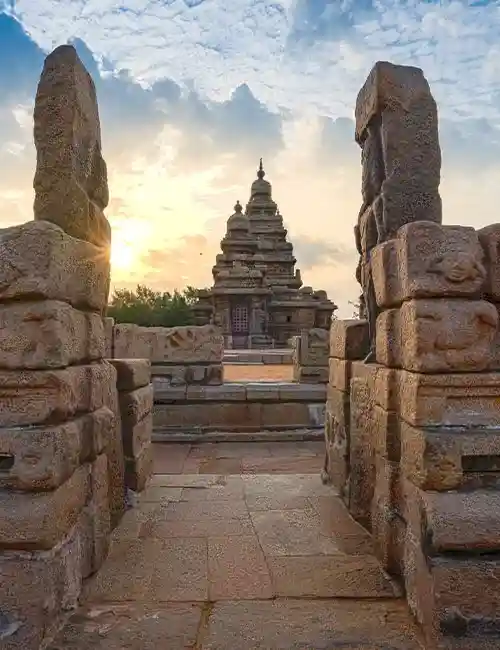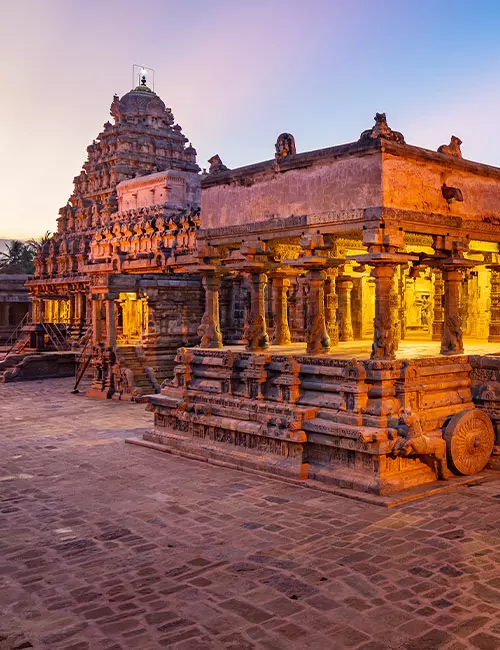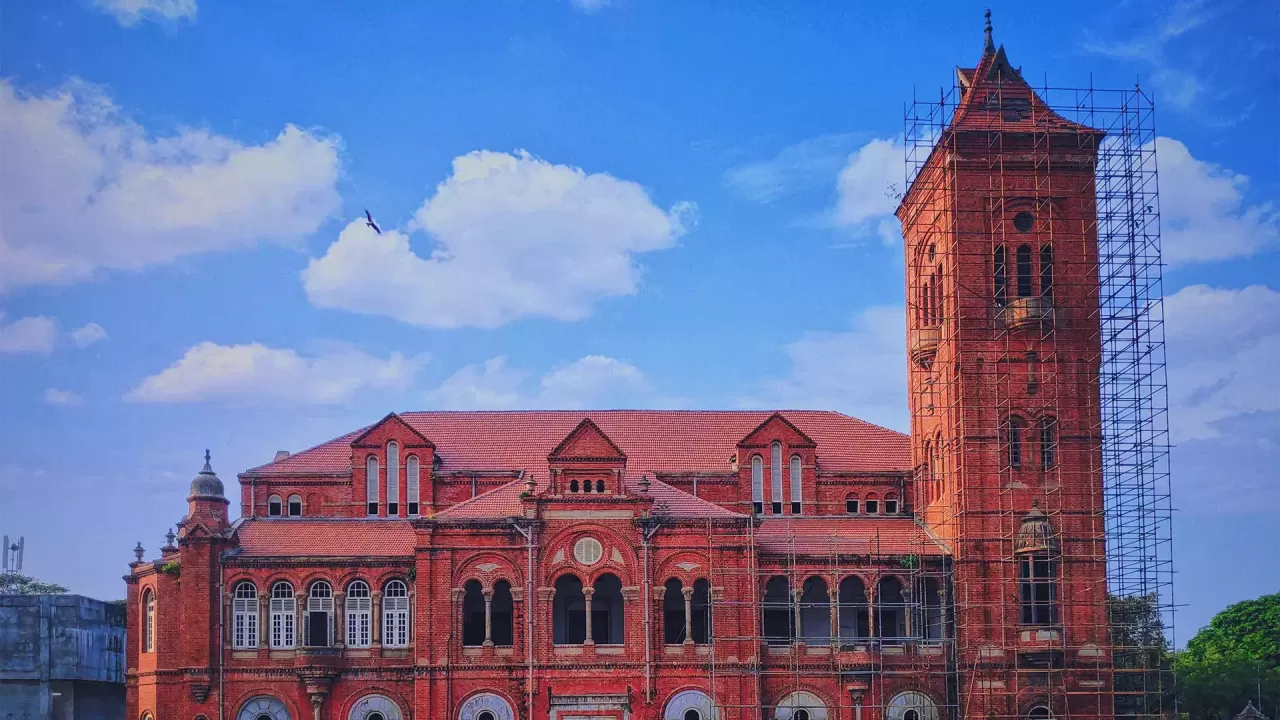
In our times of matchbox apartments and crowded parks, uninspired design and soulless malls, Chennai offers up a slice of both grandeur and grace through its several heritage buildings reflective of colonial times. Part 18 of an Outlook special on lesser-known destinations in Tamil Nadu
One of the legacies of India’s colonial history is a trail of beautiful buildings, extending across the length and breadth of the country. The arrival of the British East India Company at Chennai (then Madras) in 1639 and the city’s designation as the headquarters of the Company in 1641 made it the site of commercial expansion. With prosperity, new buildings as well as architectural styles developed in the late 17th and 18th centuries.
Beachfront buildings
A drive down Chennai’s famous Marina gives one a wonderful snapshot of the city’s distinct and distinguished skyline, and its history. The Chepauk Palace, the Senate House, the PWD office, Presidency College, and Madras University are all historical buildings studded along the beach drive.
Of pillars and palaces
Chepauk Palace is a natural starting point for a British blueprint trail of Chennai as it is not only one of the city’s iconic heritage structures but the birthing point of several other heritage structures. The official residence of the Nawabs of Arcot from 1768 to 1855, the Palace was designed by architect Paul Benfield and sprawls over 117 acres on the beachfront. The majestic red Palace comprises two blocks – the Khalas Mahal and the Humayun Mahal – which were much later linked with the distinctive, soaring tower by Robert Fellowes Chisholm, an architectural genius of the 19th century.
The Nawab’s Artillery Park and the octagonal bathing pavilion became the site for Madras University, while the southern gardens in 1866 became the site for the new Indo-Saracenic building for the Public Works Department - designed again by Chisholm.
Sedately Senate
The next point on the itinerary is the Senate House, another wondrous edifice that is not only a city landmark but a magnificent example of Indo-Saracenic architecture. Constructed by Robert Chisholm between 1874 and 1879, the building’s great hall with its immense height and graceful proportions, is considered among the finest of its kind in India. Stained-glass windows, rare fresco paintings, intricate murals and painted panels enrich the interior further. It is the administrative hub of Madras University.
With bells and whistles
Next on the list is the Ripon Building, one of the most dazzling architectural wonders of Chennai. This majestic, three-storey edifice was built in the early 1900s and is the seat of the Greater Chennai Corporation. Constructed by Loganatha Mudaliar, it is named after Lord Ripon who was the then Governor General of British India.
The building is part of a complex that includes parks, gardens and public meeting places. Four bells cast by Gillett and Johnston and the Westminster Quarter chiming clock are other attractions.
Haven of hope
St. George’s Cathedral, constructed in 1815, and the Mother Church of the Diocese of Madras, is a quiet island of serenity in a bustling area. The structure is Neo-classical in style, built of lime and mortar and has a long nave and two side entrances. The steeple and the grand Ionic columns are important architectural elements and add to its majesty.
Restful retreat
Another equally historically significant place of worship and reflection with many architecturally wonderful buildings is the Theosophical Society Adyar complex. Spread over a total area of about 250 acres, the complex houses shrines dedicated to various faiths - there is a gurudwara, a Hindu temple, and a Buddhist shrine along with a bodhi tree and a beautiful lotus pond, as well as the Church of St Michael and All Angels and a Zoroastrian Temple. With its magnificent collection of books, the Adyar Library and Research Centre is indeed a haven of reflection in the middle of the bustling city.
These are just the tip of the architectural iceberg that is Chennai. That too, only the ones of British influence. Chennai through its buildings holds the heart of the history of colonial India.



